If you’ve ever asked a chatbot the same worry three different ways “just to be sure,” you’ve met the reassurance loop. It feels helpful for a minute… then you start to doubt again, and you end up asking the chatbot over and over. In Acceptance & Commitment Therapy (ACT), we don’t try to win that argument with the chatbot. We change our relationship to the thought with a practical mindfulness skill called defusion.
Why write this now? As more people rely on AI for emotional reassurance, clinicians are flagging risks, including apps marketed as “support” and outright bans on AI therapy in some places. The point isn’t panic; it’s to use mindfulness training from ACT so you stay in charge even while the mind keeps churning out questions.
Source 1: Meta and Character.ai probed over touting AI mental health advice to children
Source 2: Illinois bans AI therapy as some states begin to scrutinize chatbots
What is an “AI reassurance loop”?
A reassurance loop is the urge to keep checking, asking, or verifying to overcome anxiety. Classic anxiety/OCD research shows that frequent reassurance provides brief relief and reinforces the cycle long-term; your brain learns “ask again or you’re not safe.” Swap a partner or friend for an endlessly patient chatbot, and the loop can run 24/7
Source 3: Reassurance seeking in the anxiety disorders and OCD
Recent coverage has shown how using AI for constant reassurance can worsen compulsive checking and negatively impact human connection (e.g., “If I ask one more time, I’ll finally feel okay”—until you don’t)
Source 4: How ChatGPT Could Be Making Your OCD Worse – Teen Vogue
Chatbots can feel soothing because they’re instant and tireless, yet that design can reward the very behavior that keeps people stuck. Experts caution that the tech can misread risk and encourage dependence. Some states are now restricting or scrutinizing AI marketed as mental-health help. Use tools, but train the skill that keeps you from getting hooked [1, 2]
Why ACT targets the loop differently
ACT is a form of mindfulness-based behavior training that builds psychological flexibility, which is the capacity to notice thoughts and feelings, then choose actions that are per your values. Meta-analytic and process research shows that as flexibility increases, distress and stuck patterns tend to drop.
Source 5: The Six Core Processes of ACT
Source 6: Examining domains of psychological flexibility and inflexibility
Similarly, one of its core skills is cognitive defusion: treating thoughts as words and images by the mind, not commands. And this isn’t just theory: brief defusion exercises have repeatedly been shown to reduce the believability and emotional punch of sticky thoughts; often within a single session [7, 8]
Source 7: The effects of cognitive defusion and thought distraction
The 60-Second Defusion
Use this the next time you feel the urge to ask the bot for reassurance, thinking “just to be sure.”
1. Catch the sentence
Write the exact urge-line your mind is selling:
“If I ask again, I’ll finally be certain.”
2. Add the defusion prefix
“I’m noticing that I am having a thought that** if I ask again, I’ll finally be certain.”
3. Read it once, slowly
Notice how it now sounds like text on a screen, not a rule.
4. Name one observable fact
For example: *“I already asked three times and nothing changed.”*
5. Choose a small, values-aligned action
Close the tab and take a small action towards your values.
Three real-life scripts
Health spiral:
“I’m having the thought that this symptom means something catastrophic.”
Tiny move: Try to map out a plan like “If still worried tomorrow, message my clinician”) and return to what you were doing. Cyberchondria research links repeated checking with more anxiety; defusion helps you pause the cycle.
Source 8: Conceptualizations of Cyberchondria and Relations to the Anxiety
Relationship reassurance:
“I’m having the thought that if they don’t reply in 10 minutes, they’re upset with me.”
Tiny move: send one clear, kind message once or step away for 15 minutes.
Why defusion beats “just get more answers”
FAQs
Is defusion the same as positive thinking?
No. Defusion doesn’t argue with a thought or replace it; it labels the thought so you can act on your values instead of on fear. (Studies show brief defusion reduces a thought’s believability and emotional sting)
Is this real mindfulness training if there’s no sitting practice?
Yes. In ACT, mindfulness means awareness plus flexibility in the moment. Defusion is a mindfulness skill you can run mid-scroll, mid-email, mid-worry; no timer required.
Will defusion stop the thought from coming back?
Thoughts come and go. The win is that you’re less fused with them, so they drive your behavior less. With practice, the loop weakens.


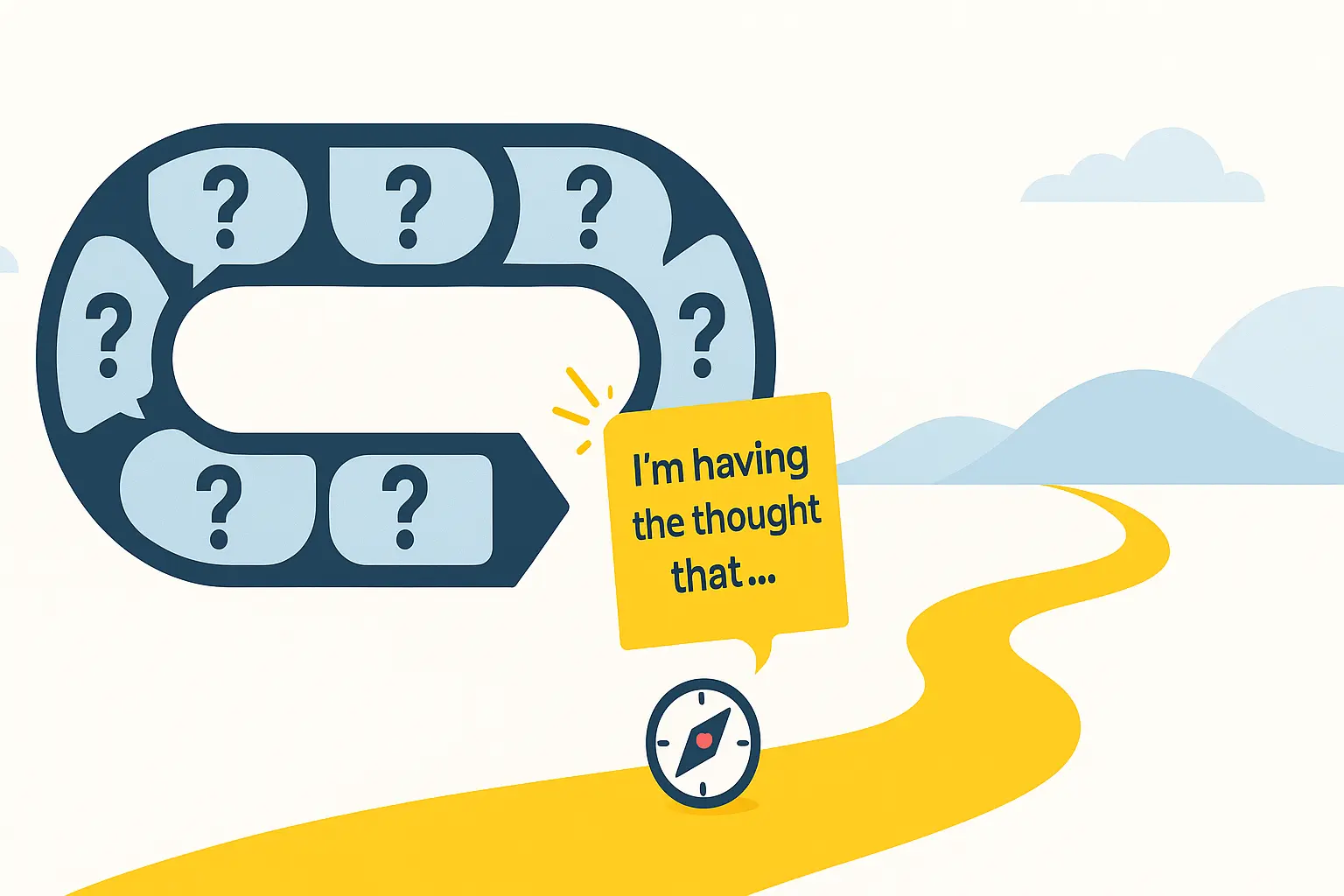
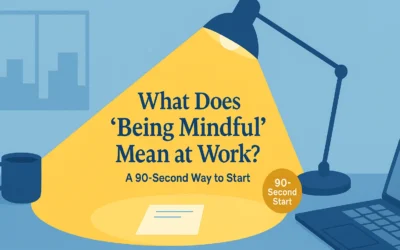
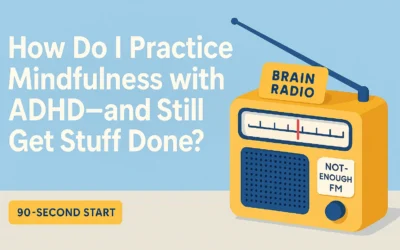
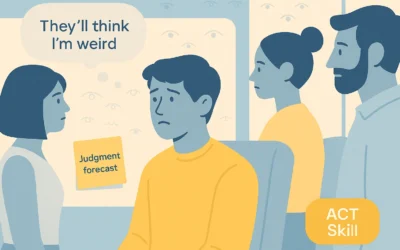



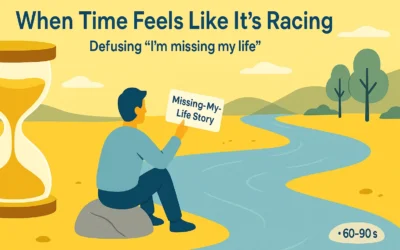
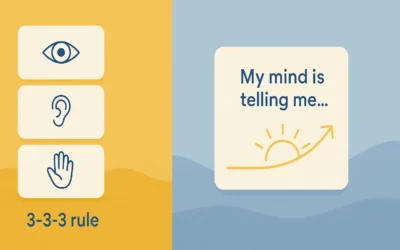


0 Comments